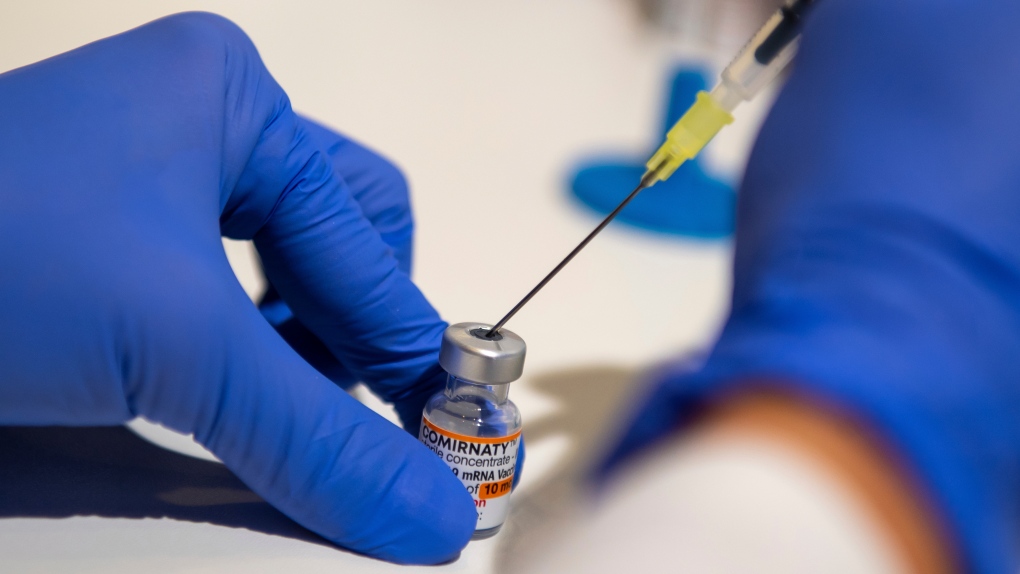
Leading researchers in a range of sectors including sleep, power electronics and the development of a COVID-19 mRNA vaccine are among the five Canadians awarded $100,000 each for their innovative accomplishments.
The National Research Council of Canada announced the annual winners of the Killam Prize on Wednesday in multiple categories — health sciences, natural sciences, social sciences, engineering and humanities.
The privately funded National Killam Program was administered by the Canada Council for the Arts for over half a century before the research council took over last year. More than $1 billion has been provided by the Killam Trusts for higher education in Canada, the council said.
This year’s recipients, selected by a committee of their peers, include Charles M. Morin, a Laval University psychology professor known for his finding that cognitive behavioural therapy, or CBT, is as effective as medication for treating insomnia in the short term.
Praveen Jain, a professor of electrical and computer engineering at Queen’s University, was recognized as an expert in power electronics. The technology helps control the amount of electricity that flows for different devices and how it can be used to save energy for various systems including those applicable to space, telecommunications and renewable energy.
Ajay Heble of the University of Guelph received the honour for his role in establishing the academic field of critical studies in improvisation through music and other forms as a model for social change through partnerships with community groups.
Two University of British Columbia researchers won the Killam Prize, including Pieter Cullis, who worked on a technology for the targeted delivery of five recently approved drugs for cancer and gene therapies as well as vaccines.
They included the COVID-19 vaccine Comirnaty, developed by Pfizer-BioNTech and delivered to billions of people around the world during the pandemic.
Sarah Otto, an evolutionary biologist at UBC, has pioneered several mathematical models to understand how and why sexual reproduction happens in nature.
“It’s kind of crazy to reproduce by sex because it’s a really risky venture,” she said. “You have to find a mate, you have to have them mating with you and worst of all, you take your own genome, which allowed you to survive and reproduce, and then you break it all up by mating with somebody else and recombining your genome to make an offspring. And their genome has no guarantee of working in the current environment.”
That’s opposed to dandelion weeds, for example, which reproduce asexually, Otto said.
The impact of human behaviour on the “evolutionary tree of life” is another big area of study as some species are being driven to extinction and others are moved around through the elimination of wetlands and other changes to the environment, she added.
“Are there ways that we can help move individuals around to help them evolve and adapt and survive, or what else can we do? That requires modelling to be able to say what the best approach is.”
Otto has also co-led the COVID-19 modelling group in British Columbia to show the impact of the pandemic and its expected progression.
Morin, of Laval, said chronic sleep deprivation is increasingly being recognized as a risk factor for anxiety and depression as well as high blood pressure — because it doesn’t have a chance to drop during sleep — along with diabetes and obesity.
Thirty years ago when he began his research, medication was the only treatment for insomnia but many people resisted that option and there were no available alternatives, he said.
That led Morin to develop behaviour changes for which he has been globally recognized through training workshops for health-care providers and the general public.
He began with a program that involved six to 10 visits with a psychologist or mental health counsellor. While some of that information is now available online or through apps, Morin said personal coaching or therapy is best.
However, most people do not have access to a psychologist because that care is not universally covered, he noted, adding loss of productivity, such as through absenteeism at work and accidents involving lack of sleep, cost the overall system more money.
While CBT is considered the treatment of choice for chronic insomnia, it does not work for some people, he said.
Morin recently received a grant from the National Institutes of Health in the United States for a study to determine who would be the best candidates for CBT versus medication.
“Maybe everyone should have CBT first,” he said. “And then if it doesn’t work for a given person, we could look at other options — maybe medication, maybe complementary or alternative therapies. But we still have a lot of work to do.”
